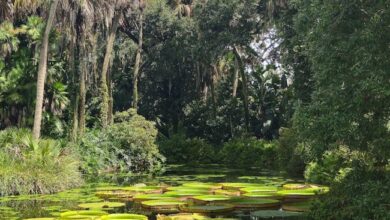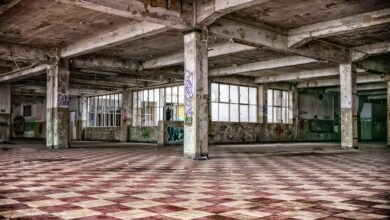The Dawn of True Autonomous Agents

Remember those sci-fi dreams of truly intelligent AI agents, the ones that could understand a complex goal and then just… go execute it, figuring out the steps, using tools, and adapting along the way, all without needing a human to hold their hand? For a long time, that felt like a distant fantasy, a compelling narrative for movies but far from our current reality of chatbots that, while impressive, still often require careful prompting and frequent course correction for multi-step tasks.
Well, it seems the future is arriving faster than we thought. Moonshot AI has just dropped a significant bombshell with the release of Kimi K2 Thinking, an open-source model that promises to bridge a crucial gap between impressive language generation and genuinely autonomous action. What makes K2 Thinking stand out? Its ability to perform an astonishing 200 to 300 sequential tool calls without human interference. Let that sink in for a moment. This isn’t just answering a question; it’s orchestrating a complex, multi-stage operation. And honestly, it’s a game-changer.
The Dawn of True Autonomous Agents
When we talk about AI “thinking” and “tool calls,” it’s easy to picture something overly simplistic. But with Kimi K2 Thinking, we’re talking about an AI agent that can truly interleave its chain of thought with dynamic function calls. Imagine giving an AI a high-level objective like “research the viability of offshore wind farms in the North Sea, including regulatory hurdles, environmental impact, and economic forecasts.” A typical LLM might give you a decent overview, but K2 Thinking can go much further.
It can read an initial brief, then ‘think’ about what information it needs, ‘call’ a search engine tool, process the results, ‘think’ again to identify gaps, ‘call’ a data analysis tool to parse reports, ‘think’ about regulatory documents, ‘call’ a PDF reader, and repeat this cycle hundreds of times. This iterative process, where it reads, thinks, acts, and then reflects, is what allows for such deep reasoning and long-horizon tool use. It’s less like a conversation and more like observing a highly competent, albeit digital, researcher at work.
Beyond Chatbots: The Agentic Leap
For too long, the practical application of AI has often been constrained by the need for constant human supervision, particularly in complex workflows. We’ve seen incredible advancements in generating text, images, and even code, but stringing together dozens or hundreds of these actions autonomously has remained a significant hurdle. Kimi K2 Thinking represents a foundational shift, moving us closer to AI that can genuinely operate as an agent in its own right, tackling tasks that require sustained focus and adaptive strategy.
This isn’t just about speed; it’s about reliability and coherence over an extended period. The ability to maintain stable agent behavior across hundreds of steps is critical for real-world applications where a single misstep can derail an entire project. It’s like having a project manager who never forgets a detail and can execute a detailed plan flawlessly, no matter how many sub-tasks are involved.
Under the Hood: A Glimpse at K2’s Genius
So, how exactly does Moonshot AI pull off this impressive feat? It’s a combination of cutting-edge architectural design and smart optimization. Kimi K2 Thinking inherits the Kimi K2 Mixture of Experts (MoE) architecture, a powerhouse design featuring a staggering 1 trillion total parameters, with 32 billion activated parameters per token. Think of an MoE model as having a massive team of specialized experts, where only the most relevant few are called upon for any given task, making it incredibly efficient while still retaining vast knowledge.
Beyond its brainpower, K2 Thinking boasts a monumental 256K token context window. In simple terms, this means it has an incredibly long-term memory for the task at hand. It can ‘remember’ a huge amount of information from previous steps, instructions, and tool outputs, which is absolutely vital for maintaining coherence and context over those hundreds of sequential actions. It’s the difference between someone trying to solve a complex puzzle with only a small piece of paper versus someone with an entire whiteboard at their disposal.
Speed and Smarts: The INT4 Advantage
Another brilliant move by Moonshot AI is the native INT4 inference. This isn’t just a technical detail; it has significant practical implications. By training K2 Thinking as a native INT4 model and applying Quantization Aware Training, they’ve managed to achieve roughly a 2x generation speed improvement in low-latency mode. What does this mean for users? Faster responses, reduced GPU memory usage, and more efficient deployment, all while preserving its state-of-the-art benchmark performance. It’s like having a super-fast brain that’s also incredibly energy-efficient.
This efficiency is paramount for making long-horizon agents practical. If an agent needs hundreds of steps to complete a task, each step needs to be fast and cost-effective. K2 Thinking’s INT4 optimization ensures that these complex operations can be executed quickly enough to be genuinely useful in real-time scenarios, moving it firmly out of the realm of theoretical research and into deployable infrastructure.
Putting It to the Test: Benchmarks and Real-World Potential
The proof, as they say, is in the pudding, and Kimi K2 Thinking has been put through its paces on a variety of rigorous benchmarks. Its performance on tasks like “Humanity’s Last Exam” (especially with tools, where its score jumps significantly), BrowseComp for agentic search, and SWE bench Verified for coding, isn’t just impressive; it’s indicative of a model truly designed for deep reasoning and complex problem-solving. A score of 99.1 on AIME25 with Python or 71.3 on SWE bench Verified isn’t just a number; it points to an AI that can genuinely assist in advanced mathematics and robust software development.
The model is explicitly optimized for “test time scaling,” meaning it’s trained to expand its reasoning length and tool call depth when faced with harder tasks. This adaptive approach, coupled with evaluation under large thinking token budgets and strict step caps (like 300 steps with a 24K reasoning budget per step for agentic search), highlights its robustness. Moonshot AI even employs a “Heavy Mode” that runs eight trajectories in parallel to squeeze out extra accuracy for the toughest reasoning challenges. This dedication to performance under pressure showcases a commitment to building truly reliable AI agents.
From complex scientific research that requires correlating data from multiple sources to advanced software engineering tasks involving code generation, testing, and debugging over many iterations, K2 Thinking’s capabilities open doors previously inaccessible to open-source models. Imagine an AI that can not only draft a complex legal document but also verify citations, cross-reference precedents, and even identify potential loopholes, all without a human prodding it every few minutes. That’s the kind of future Kimi K2 Thinking is ushering in.
The Road Ahead for Intelligent Agents
Kimi K2 Thinking isn’t just another incremental improvement in the crowded AI landscape. It’s a strong signal that the era of truly practical, autonomous open-source reasoning agents is dawning. Moonshot AI isn’t just showcasing a 1 trillion parameter Mixture of Experts system with a colossal 256K context window; they’re doing it with native INT4 quantization and a tool orchestration capability that reliably executes for hundreds of steps in production-like environments.
This release underscores a fundamental shift in AI development: test time scaling and long-horizon planning are becoming first-class design targets. What was once a research demo is now evolving into practical infrastructure. As developers gain access to these powerful, open-weights models, we can expect a rapid acceleration in the creation of sophisticated AI applications that move beyond simple query-response systems to genuinely intelligent, multi-step problem solvers. The dream of AI that can truly think, plan, and act autonomously is not just a dream anymore; it’s becoming a tangible reality, and Kimi K2 Thinking is leading the charge.





